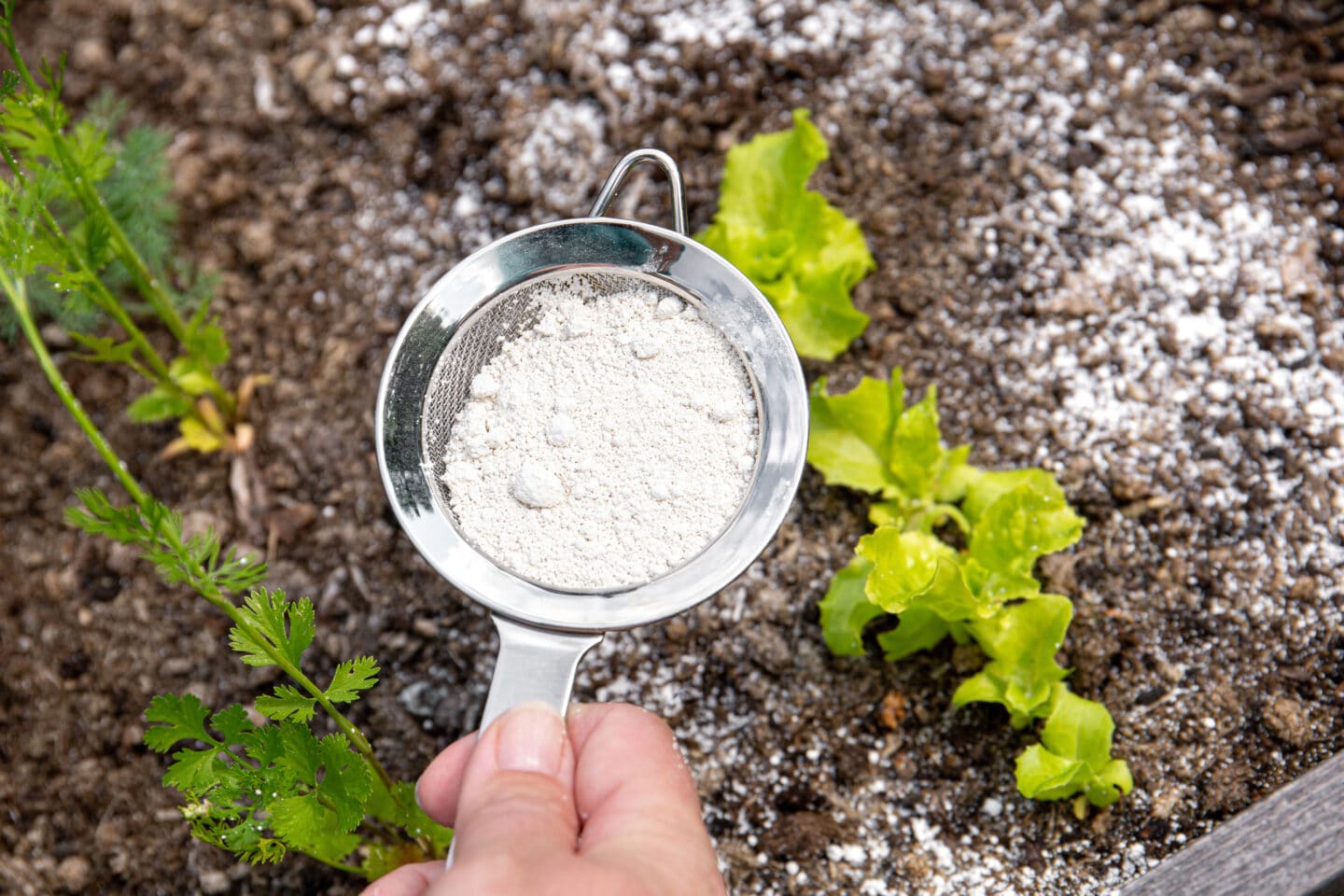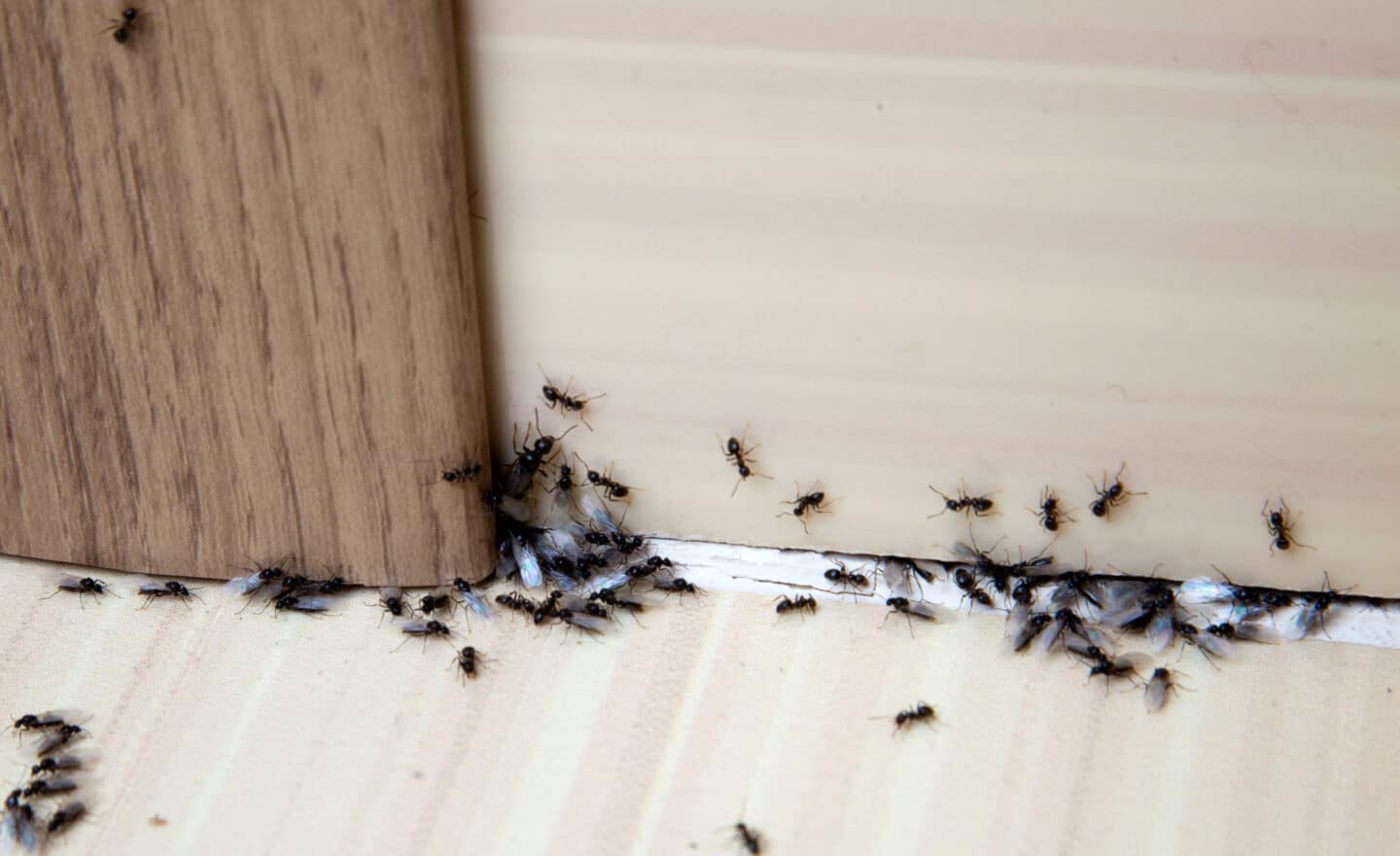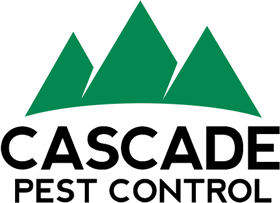Author: Kurt Treftz, Cascade Pest Control
Finding a trail of ants from your door to your pantry is no laughing matter. So when faced with such a situation, many homeowners with an ant problem are quick to look for solutions that they can do promptly and effectively on their own. One common DIY option for ant control is diatomaceous earth, a known insecticide.
What is diatomaceous earth?
Diatomaceous earth is a fine powder of fossilized diatoms (microscopic aquatic organisms with a silicate shell / skeleton). Silica is a common substance found in nature that makes up over a quarter of the earth’s crust. This sedimentary rock is naturally occurring and found in the beds of rivers, streams, lakes, and oceans. Silicon dioxide results from the reaction of silicon, oxygen, and water and develops into two naturally occurring forms: crystalline and amorphous.

Amorphous diatomaceous earth has been used in pest control since the 1960s. But it is also used in many other products such as skin care, toothpaste, foods, beverages, medicines, paints, and more.
How does diatomaceous earth work for DIY ant control?

Diatomaceous earth (DE) is an effective solution for killing common household pests, like ants. Its mechanism of threat however is unique. Ants, or other insects, don’t need to ingest DE. Instead, it is a mechanical insecticide that works through chafing and desiccation.
When ants come into contact with the diatomaceous earth, the microscopic particles stick to their exoskeletons. As the particles rub, chafe, and wear down the protective layer of the ant’s exoskeleton, they create vulnerabilities. The abrasive dust damages the ant’s exoskeleton, accelerating water loss and compromising its ability to retain moisture. Eventually, this will kill the ant.
Pros of diatomaceous earth for DIY ant control
- Environmental safe
There are two types of diatomaceous earth: food-grade and pool-grade. Food-grade diatomaceous earth is safe and used for many applications including ant control. Pool grade diatomaceous earth is used for pool filtration and is chemically treated so it is not suitable as an insecticide.
One of the benefits of diatomaceous earth is that it is quite safe for people, pets, and the earth. Since it is naturally occurring and common, diatomaceous earth can be used in a variety of settings without fear. Care should still be taken during the application of diatomaceous earth since it can irritate the lungs, if inhaled, and cause drying / irritation of the skin as well, but overall DE is a very safe method of ant control.
- Effective
Diatomaceous earth is effective at exterminating many of the bugs that contact it. Since it works mechanically, bugs don’t develop a resistance to it. This makes it an excellent form of ant control.
- Easy
Application is fairly easy, without worrying about ratios, mixing chemicals, or unintended consequences. Simply sprinkle the dust around the perimeter you are protecting. It is recommended that you wear a mask during the application phase since it is a fine powder that can irritate if inhaled, but once it has settled, it is safe.
Cons of diatomaceous earth for DIY ant control
- Spotty control
Unfortunately, DE only works on bugs that contact it directly. This means that the bulk of an infestation can remain safely ensconced in the nest and not be impacted by diatomaceous earth. While foraging ants might bring some of the powder back to the colony, it generally isn’t enough to wipe out the ant colony.
- Slow acting
Because it takes time for diatomaceous earth to work, it can take hours or days for it to take effect. This means it can be a good option for prevention, but not as helpful during an active ant infestation.
How to Use diatomaceous earth for DIY ant control
- Locate
Find areas of vulnerability or activity. If you have seen ants or know where they are likely to be, focus your efforts there. You can even apply preemptively.
- Prepare
Clean the area of clutter so you have a clear spot for application. You want as many ants as possible to make contact with the powder.
- Apply
Sprinkle a thin, even layer of dust along the area. Try to control the application with a squeeze bottle to target areas like cracks, trails, or possible entry points.
- Wait
Diatomaceous earth needs time to do its job. Don’t wipe or vacuum it up too early. You want as many pests as possible to come into contact with it.
- Reapply
The diatomaceous earth doesn’t stay effective indefinitely. If it is exposed to moisture or dispersed, it must be reapplied. You will also need to apply a new layer if you clean / sweep it up or if you see renewed activity.
Diatomaceous earth can be an effective DIY ant control option as it is deadly to bugs. However, if you have an active infestation, you might want to call in the ant exterminator professionals at Cascade Pest Control.
